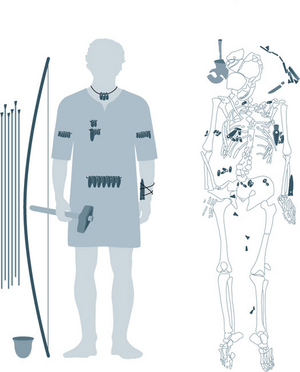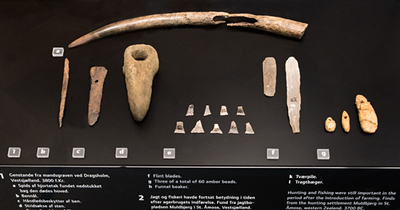Farmers, hunters and warriors
At Dragsholm in west Zealand, with a view over Sejerø Bugten, two of Denmark’s most remarkable graves were found fairly close to each other. One is from the later Mesolithic period and the other from the early Neolithic. The earliest is a double women’s grave from the later Ertebølle period. Amongst the objects placed in the grave with the two women were tooth beads, and ochre had been sprinkled over the bodies like in other Mesolithic graves. The women must have been buried at the same time. One was around 18 years old and the other was between 40 and 50. The young woman was accompanied by a flaying knife of bone and at the head end of the grave lay a bone needle and a flint arrowhead.
The other grave, dating to the early Neolithic period, belonged to a man, who was one of Denmark’s first farmers. In the grave lay his bow and arrows, a small drinking vessel of fired clay, some flint blades and a battle axe. He wore a bone wristguard upon his left wrist and amber beads were sewn on to his clothes. The grave goods reflect his life as farmer, hunter and warrior.




